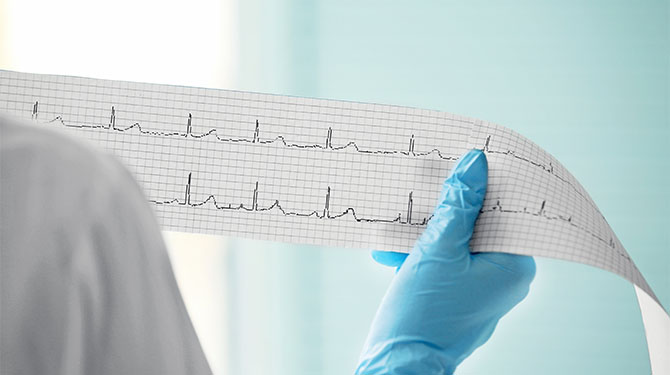Closures and Delayed Openings
To view our list of weather-related closures and adjusted hours, please visit our closings page.
 An interventional procedure is a non-surgical treatment used to open narrowed coronary arteries to improve blood flow to the heart. Interventional procedures are not considered to be surgical procedures because there is no large incision used to open the chest, and the recovery time from catheterization is much shorter than that of surgery.
An interventional procedure is a non-surgical treatment used to open narrowed coronary arteries to improve blood flow to the heart. Interventional procedures are not considered to be surgical procedures because there is no large incision used to open the chest, and the recovery time from catheterization is much shorter than that of surgery.
An interventional procedure can be performed during a diagnostic cardiac catheterization when a blockage is identified, or it may be scheduled after a catheterization has confirmed the presence of coronary artery disease.
Balloon angioplasty – a procedure in which a small balloon at the tip of the catheter is inserted near the blocked or narrowed area of the coronary artery. In most cases, balloon angioplasty is performed with stenting. A stent is a small, metal mesh tube that acts as a scaffold to provide support inside the coronary artery.
Coronary artery stent placement
Chronic Total Occlusion PCI (Percutaneous Coronary Intervention) – a procedure that treats severe blockages (99% or higher) of coronary arteries
Watch the video below to hear Dr. Henry Meltser explain the benefits of Chronic Total Occlusion PCI.
Abnormal heart rates or rhythms can now be treated with catheter-based non-surgical procedures.
EP Study – An EP study is a non-surgical procedure that studies the cardiac electrical system to help diagnose and treat heart rhythm disorders (arrhythmias). The test involves inserting catheters into a blood vessel in your wrist or groin and guiding it to your heart with the aid of a special X-ray machine. The electrode catheters used during the EP study are long, flexible wires that carry electrical impulses to and from the heart. These electrode catheters are used to record the electrical signals generated by the heart and to pace the heart. By recording and pacing from strategic locations within the heart, the cardiologist is able use this controlled environment to locate and diagnose the cause of the arrhythmia.
Radiofrequency Ablation – Radiofrequency ablation uses an electrode catheter to destroy the abnormal electrical tissue causing the arrhythmia.
Cardioversion – Cardioversion delivers an electrical shock to the heart to convert an irregular or fast heart rhythm to a normal heart rhythm.
Cardiac Implants – Cardiac implants serve to help the heart’s electrical system function properly. These devices include pacemakers, cardioverter defibrillators, and loop recorders.
Transcatheter Aortic Valve Replacement (TAVR) – TAVR is used to treat patients with severe aortic stenosis – a narrowing of the heart’s aortic valve – who are too sick for traditional heart surgery. During the procedure, a small catheter is used to place a new aortic valve within the damaged valve to more effectively regulate blood flow in the heart.
Closure of an abnormal opening between the left and right atria (upper chambers) of the heart.